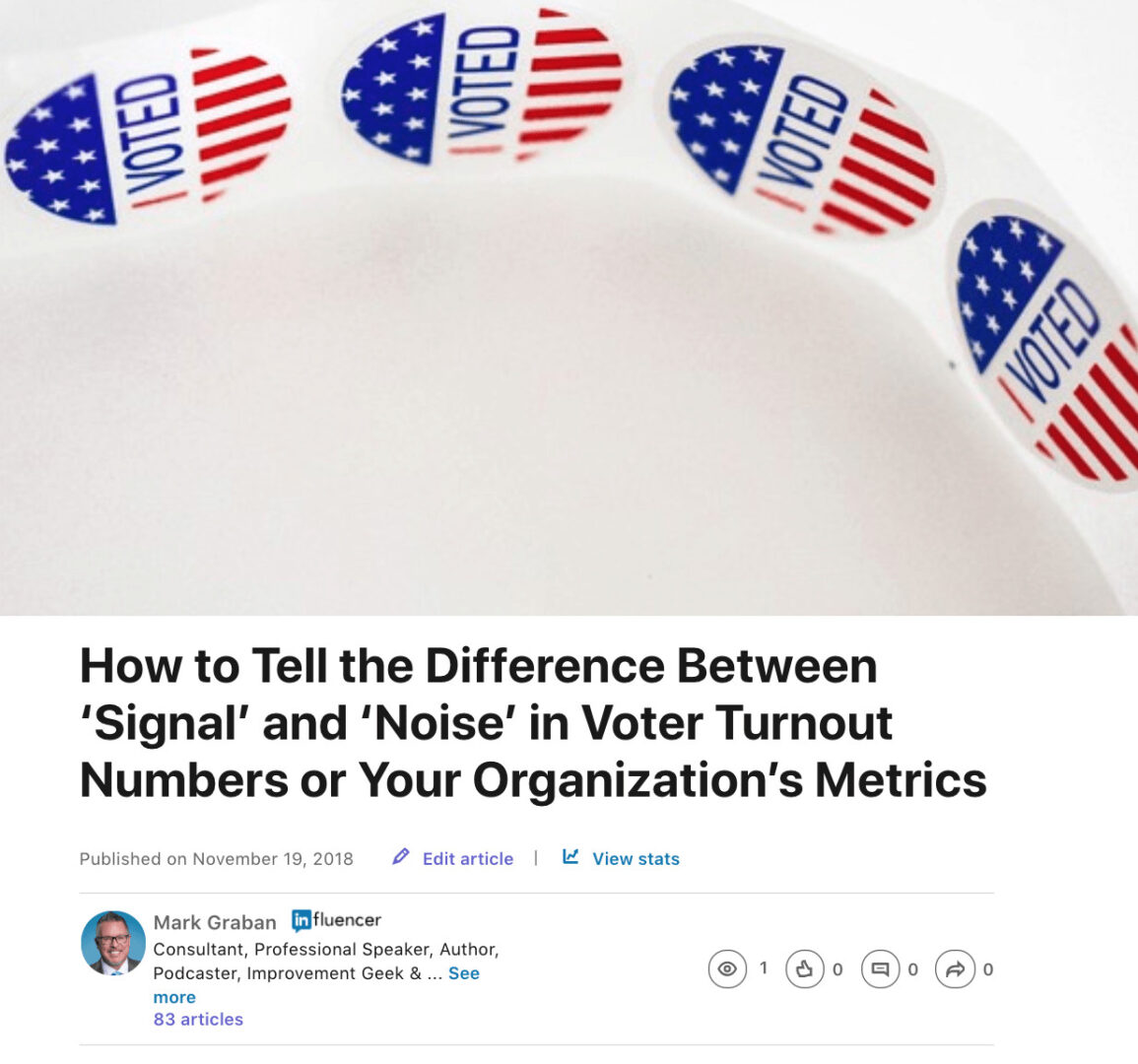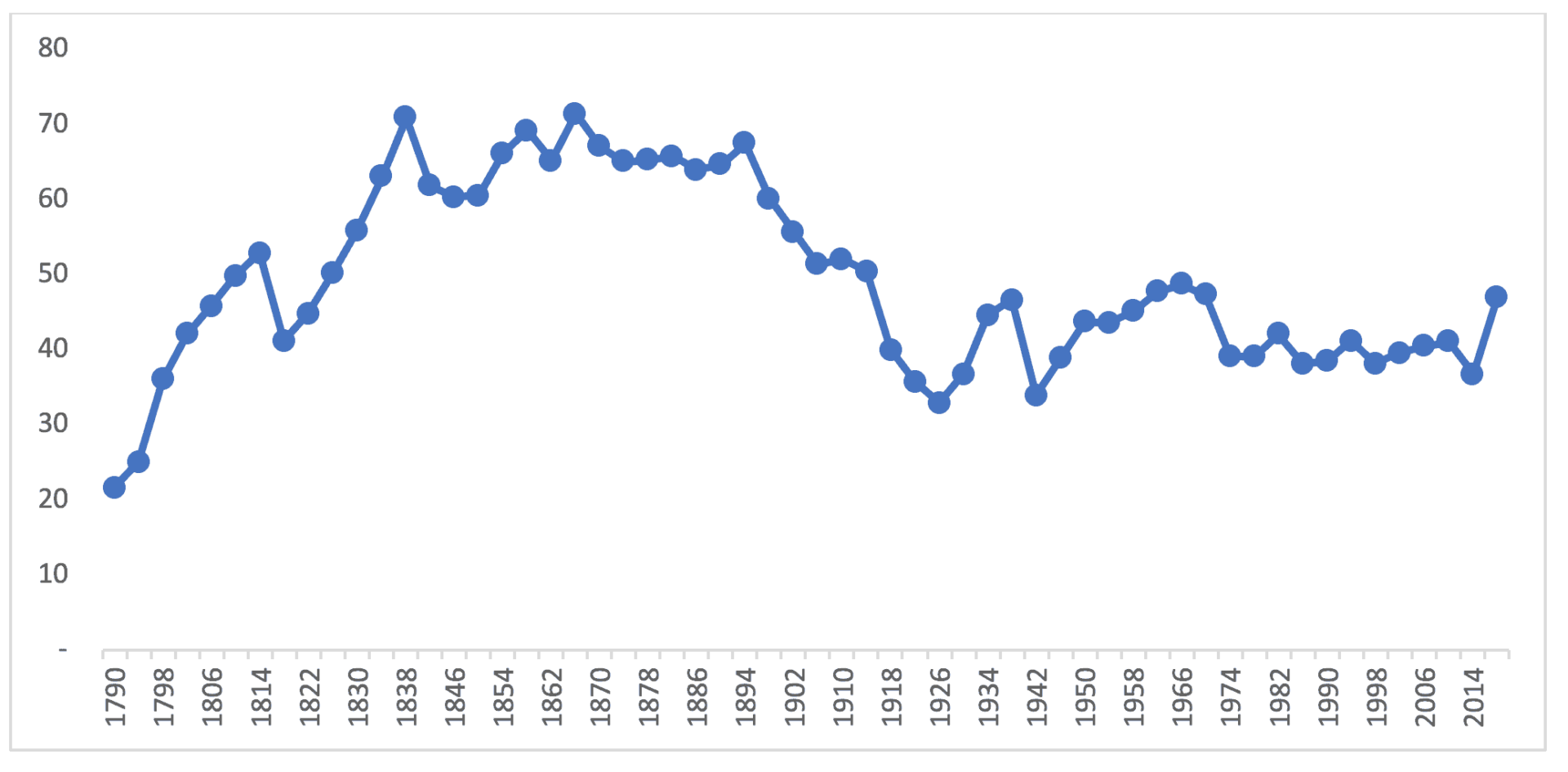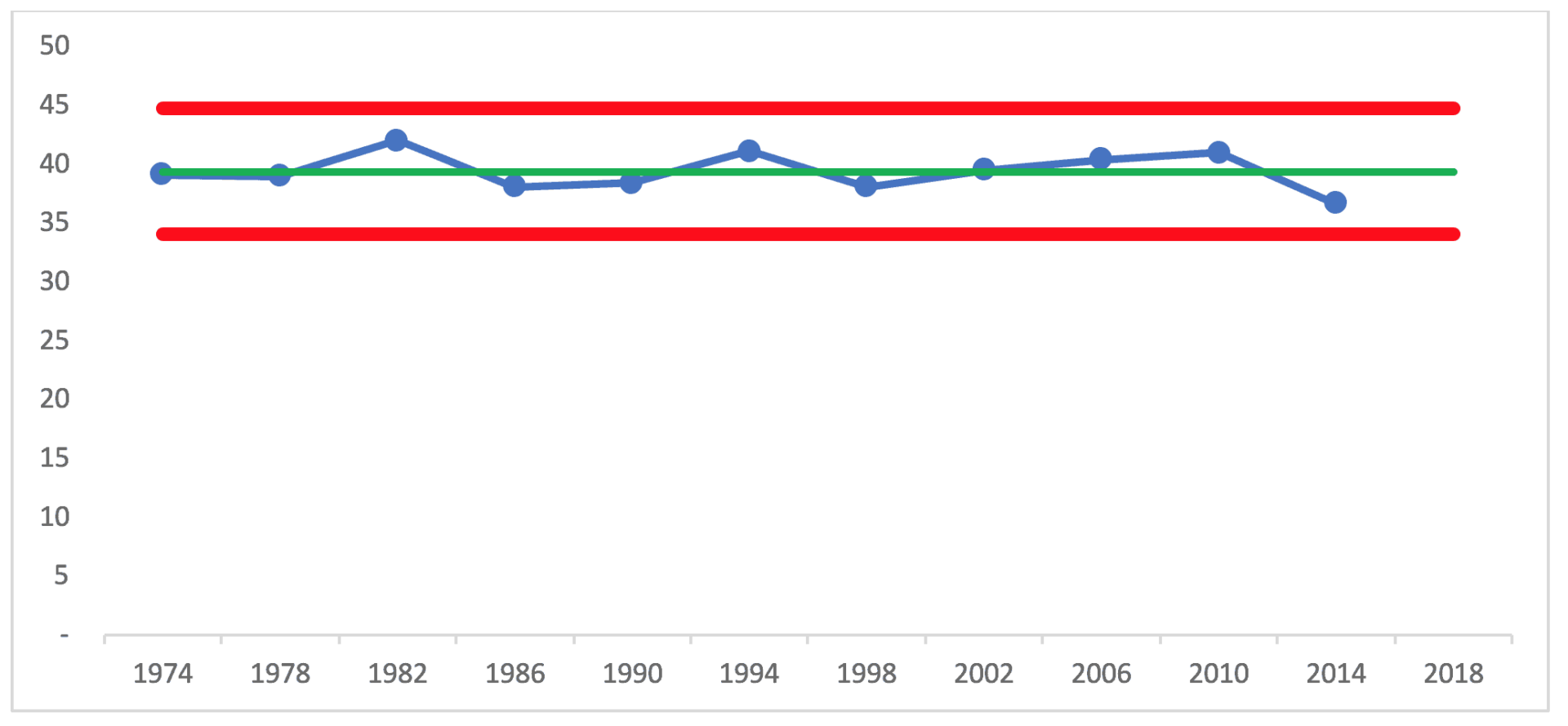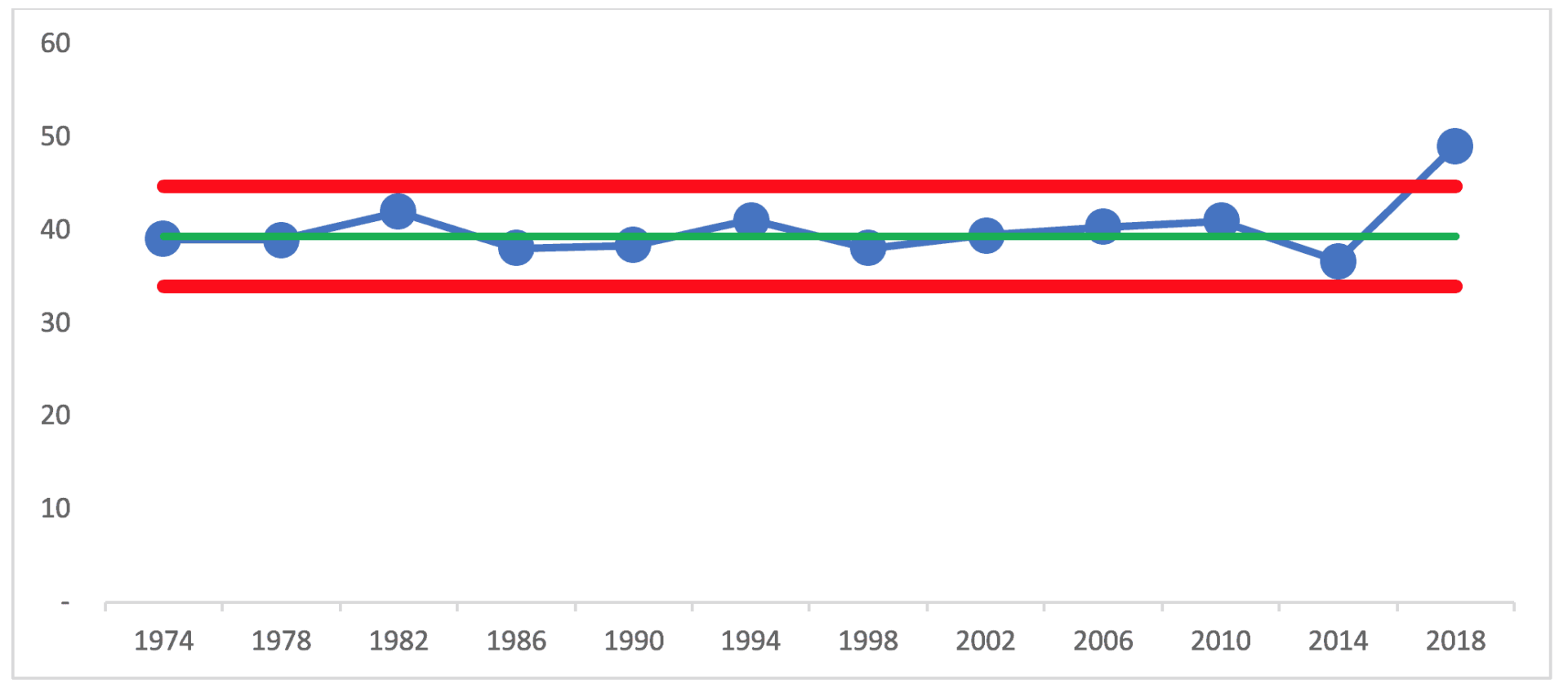Here is a new article that I posted on LinkedIn… don't worry, it's not political, but it does look at recent voter turnout rates through a statistical lens. And I think it's a lens that's helpful for looking at metrics in our own organizations:

The full article can also be found below:
After the recent midterm elections, Americans have seen headlines that describe how voter turnout “soared” to over 49% and that the number of voters was a “50-year high.” That sounds impressive, but how can we put those numbers into the proper context? Articles published after the 2014 election said that year's 36.7% rate was ” lowest in 70 years” and added that it was lower than 2010 (41%).
The problem with looking at just a data point or two is that we're missing a lot of context . How much does the voter turnout number normally fluctuate from election to election? A “run chart,” as shown below, is visual and helps us better understand how the voting rate looks over time (data is from the United States Election Project).

Yes, the 2018 turnout is higher than every year since 1974, but the number isn't higher than the time between WWII and Nixon's resignation. It would require a historian to explain why voter participation was so high in the 19th century and what caused it to fall in the 20th.
Much of the 19th century had voter turnout rates that fluctuated around an average of about 65%, while the 20th century rate fluctuated around a lower average of about 43%. Leaders in any organization or situation can learn to think about shifts in averages over time (taking the fluctuation into account) instead of relying on knee-jerk reactions to each data point.
When looking at a measure over time, it's very beneficial to learn how to distinguish between “signal” (a meaningful change) and “noise” (or a small fluctuation). Sometimes an impressive sounding two-data-point comparison is really just noise (if the number typically fluctuate that much from period to period). We can use a method called “Process Behavior Charts,” as I describe in my book Measures of Success, to determine if a metric is merely fluctuating within a predictable range or if we see statistically-valid signals that tell us the underlying system has changed significantly. See more in this blog post and related webinar.
If we zoom in and look at the data from 1974 to 2014, a “Process Behavior Chart” treatment of the data shows that turnout is predictable in that it fluctuates around an average of 39.4% (shown as the green line). Using those 40 years as a baseline, we can also calculate what are called lower and upper “natural process limits” of 34% and 44.7%. The limits are referred to as “voice of the process” since they tell us how the process is behaving – whether we like the results or not.

This chart and methodology shows that every data point for those 11 elections is “noise” – there are no long runs above or below the average that would indicate the voter rate has shifted to fluctuate around a new average. There are no data points outside the limits that would indicate a significant short-term change.
It would be a waste of time to ask why any single year was higher or lower than the previous election. There are people who make a career out of explaining every small change in a political number and the daily stock indices. It might be tempting to attribute the higher 1994 number to the Newt Gingrich-led Republican revolution, but that year isn't significantly higher than 1990 or 1998. There's likewise no root cause for the decrease from 2010 to 2014. Just because a number is the lowest in 40 years doesn't make it significantly different than the rest.
Businesses and organizations of all kinds also make these kinds of errors when reporting things like “sales this quarter were the highest in five years.” That sounds good, especially for managers who want to paint a picture of growth and success. Listen to how much effort financial commentators make to explain why the Dow Jones Industrial Average closed 8 points lower for the day (a minuscule change). Now, an 8 percent change would be worth understanding and explaining, since that's a signal, not noise.
The Process Behavior Chart from 2014 predicts that 2018 voter turnout would have fallen between those limits of 34 and 44.7%, unless the system changed significantly. Any single number in that range would have been noise, therefore not worth overexplaining or overreacting to. But, if people deem the average performance (and the predicted range) to be problem, they can take efforts to improve the system (learning how to better motivate people to get to the polls). Some propose Saturday voting as a systemic change that is predicted to increase average voter turnout – but the number will still fluctuate.
Since the currently-estimated 2018 turnout rate of 49.1% is higher than the upper limit of 44.7%, we can say definitively that the 2018 turnout is higher than would have been predicted by the last 40 years. It's a signal.

A Process Behavior Chart tells us that something has changed, but it doesn't tell us what changed. In the case of the 2018 election, I'll defer to the political experts to explain the higher turnout (or you can propose your own theory). If this were a workplace metric, leaders should want to understand why the number is higher so we can work to sustain performance at that higher level.
In the case of business metrics, we can likewise learn not to overexplain the noise. When we filter out noise and react only to signals, we can use our precious time more effectively. For example, I taught the CEO and marketing director at the startup software company KaiNexus to stop overexplaining each month's change in the marketing metrics. We created charts that showed most of these changes were just noise.
Having metric that's just fluctuating doesn't mean we do nothing. That time that's saved by not cooking up explanations for the noise can be better spent by improving the business systems that would lead to a significant change or a shift in the metrics that matter to our organization. If we have five core business metrics and just one shows a signal, we should focus our efforts to understand what happened there, instead of spreading our attention across explaining the noise in those other four metrics.
I hope the reader of this piece is prompted to be more skeptical when presented with a comparison of two data points – in the news or at work. You could ask to see (or create) a run chart with at least a dozen data points. Better yet, use a Process Behavior Chart to help you determine what is signal and what is noise – it's better than guessing. When you react less, you can lead better, and improve more.
What do you think? Please scroll down (or click) to post a comment. Or please share the post with your thoughts on LinkedIn – and follow me or connect with me there.
Did you like this post? Make sure you don't miss a post or podcast — Subscribe to get notified about posts via email daily or weekly.
Check out my latest book, The Mistakes That Make Us: Cultivating a Culture of Learning and Innovation:








